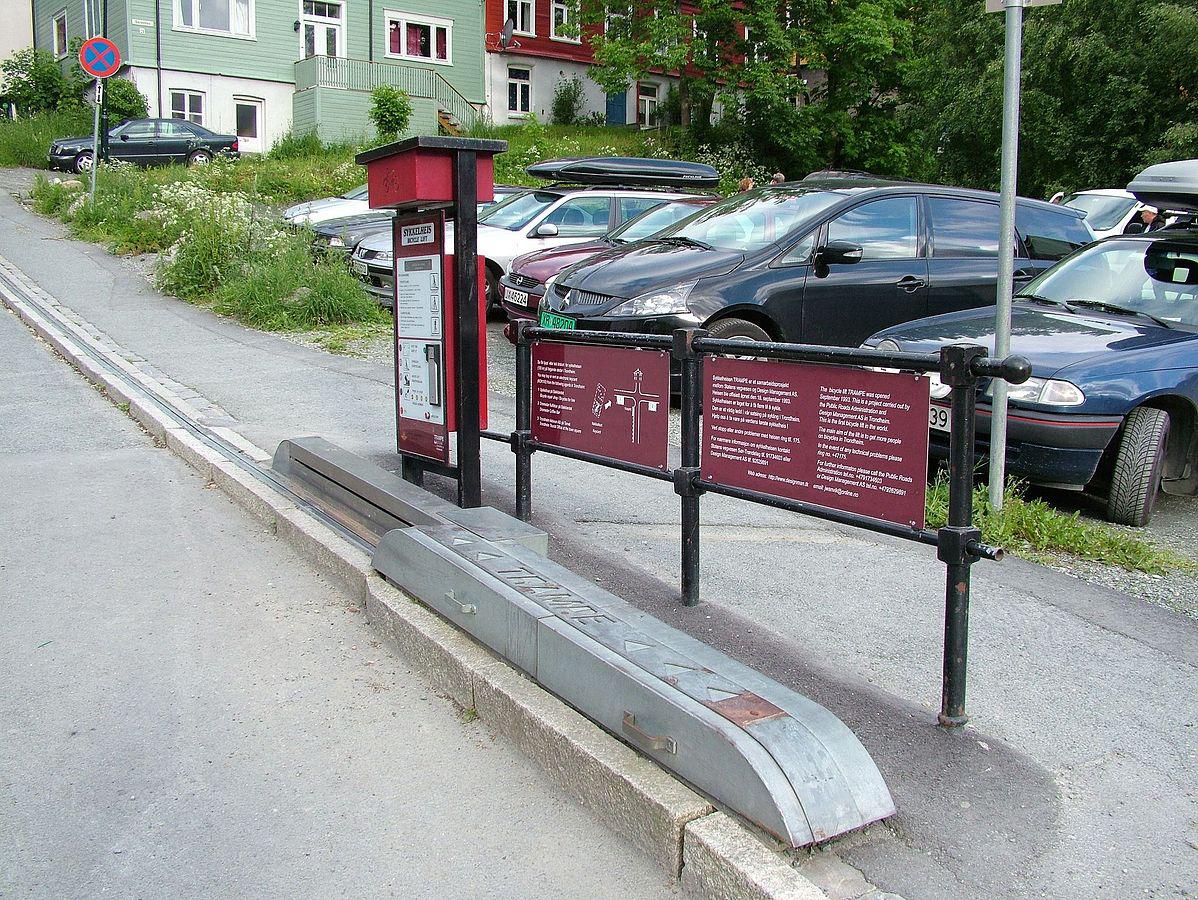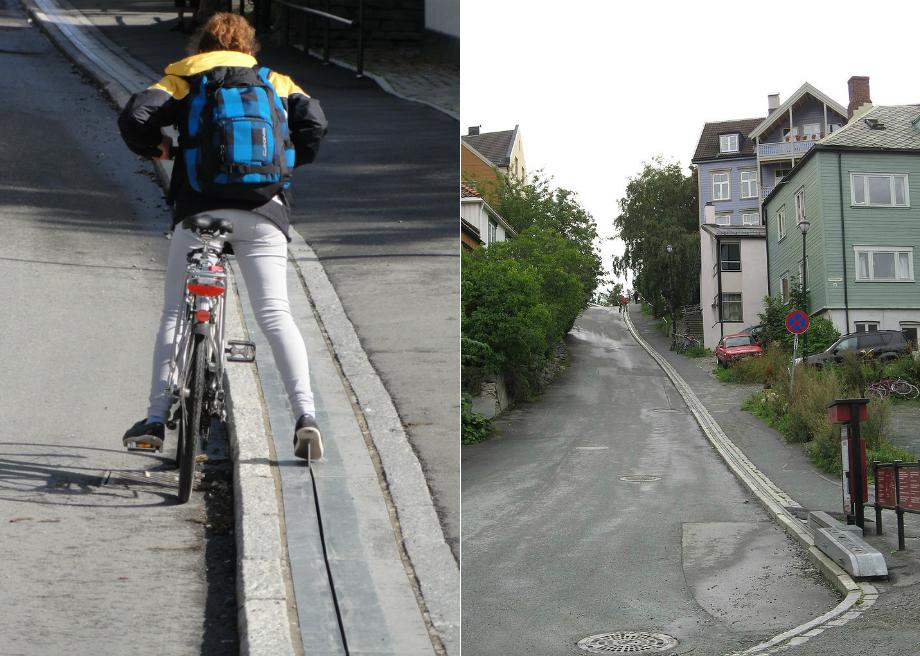Atlas Obscura on Slate is a blog about the world’s hidden wonders. Like us on Facebook and Tumblr, or follow us on Twitter.
Cycling is wonderful way to get to and from work. So healthy. So environmentally friendly. So cost-effective. But if your route home involves a giant hill, it’s way too easy to say, “Screw this. I’m taking the bus.”
The residents of Brubakken Hill, in the Norwegian city of Trondheim, do not have this problem. In 1993 they were blessed with Trampe: a bicycle escalator that pushes riders up the hill without requiring them to dismount.
To use the escalator, a cyclist rides up to the station at the bottom and places her right foot on a small footplate sticking up from the slot running along the curb. The plate then moves all the way up the hill, lifting the rider along with it. There are multiple footplates, spaced every 66 feet to allow up to six cyclists to use Trampe at the same time.
Trampe is the world’s first and, thus far, only bicycle escalator. In 2013 it was refurbished by a French cable-supported transport company named SKIRAIL and rebranded as a CycloCable. The company says it is optimistic about being contracted to install bike escalators in cities around Europe, USA, Canada, and East Asia, but so far a lack of money devoted to bicycle infrastructure has kept the market from taking off. The CycloCable costs about $2,800 per meter to install, and can handle ascents of up to 500 meters (1,640 feet).
Visit Atlas Obscura for more on the Trondheim CycloCable.

Other treasures for two-wheelers:
